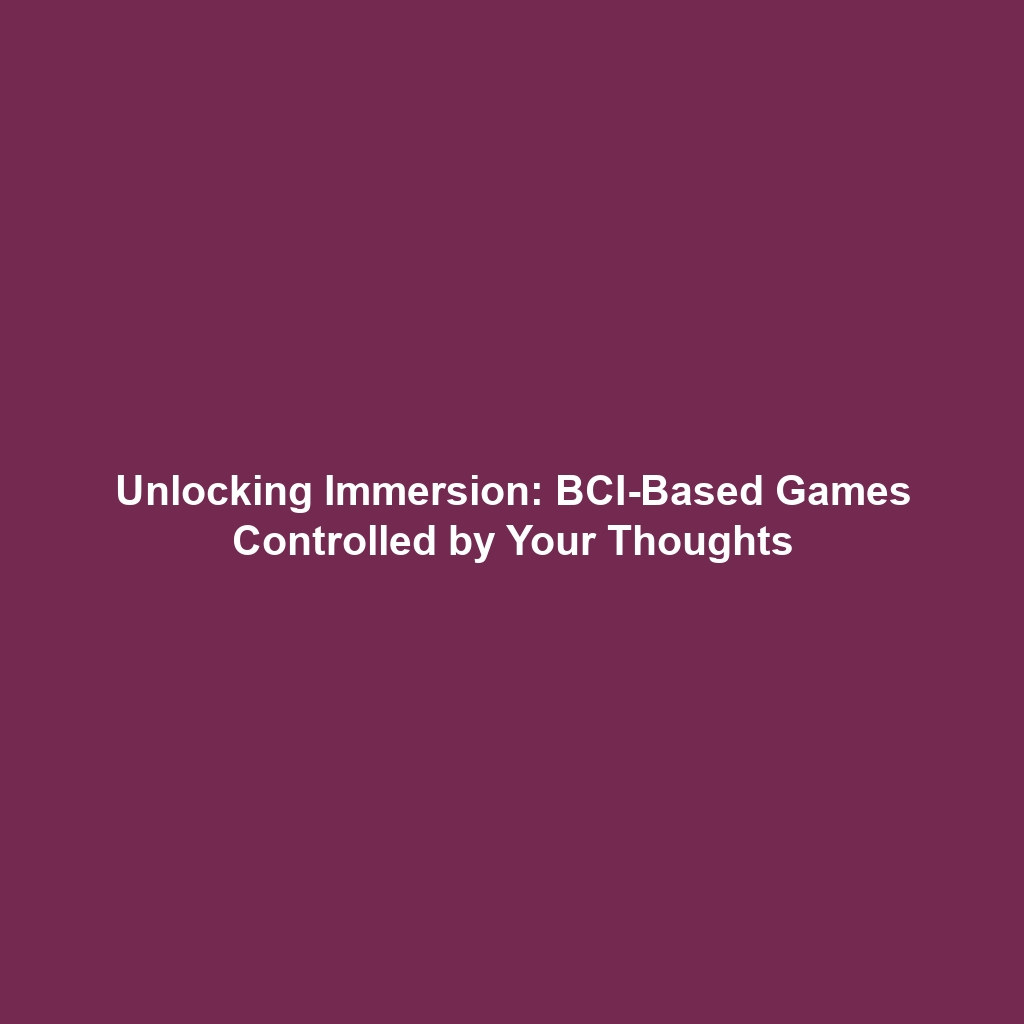Mind-Controlled Gaming Systems: Innovations in Brain-Computer Interfaces
Introduction
The emergence of mind-controlled gaming systems marks a significant leap in the realm of Brain-Computer Interfaces (BCIs). Companies such as Neurable and OpenBCI have pioneered technology that allows gamers to interact with virtual environments using their brainwaves. This innovative approach not only enhances the gaming experience but also demonstrates the vast potential of BCIs across various sectors. In a world increasingly influenced by digital interactions, understanding how these mind-controlled systems work is essential to appreciating their significance in the broader context of neuroscience and technology.
Key Concepts
Mind-controlled gaming systems leverage brain signals to facilitate interaction within games. Some of the major concepts and principles include:
- Electroencephalography (EEG): A technique used to measure electrical activity in the brain, allowing the detection of brainwaves.
- Signal Processing: The interpretation of brainwave patterns to translate them into commands for gaming applications.
- Neurofeedback: A method that allows users to gain conscious control over their brain activity, improving precision in controlling games.
These technologies exemplify the intersection of neuroscience and gaming, effectively demonstrating how mind-controlled gaming fits into the broader category of Brain-Computer Interfaces.
Applications and Real-World Uses
The applications of mind-controlled gaming systems extend far beyond entertainment. Here are some key uses:
- Rehabilitation: BCIs can be used in therapeutic settings, helping patients regain motor control through engaging gaming experiences.
- Education: Educational games utilizing BCIs can adapt to the player’s level of concentration, assisting in personalized learning experiences.
- Entertainment: Innovative gaming experiences that allow players to control characters or navigate environments solely through mental commands.
Understanding how mind-controlled gaming systems are used in the context of Brain-Computer Interfaces helps to reveal their transformative potential in diverse fields.
Current Challenges
Despite the advancements, several challenges persist in refining and widely adopting these systems:
- Accuracy: Ensuring precise brainwave detection and minimizing misinterpretations of user intent.
- Accessibility: Making the technology affordable and user-friendly for the average consumer.
- Privacy: Addressing concerns regarding brain data collection and its ethical implications.
These challenges highlight the ongoing issues in the realm of mind-controlled gaming systems and their relation to Brain-Computer Interfaces.
Future Research and Innovations
The future of mind-controlled gaming systems holds promise due to rapid technological advancements:
- Improved Algorithms: Research is focused on enhancing the algorithms used for brainwave interpretation, making interactions more seamless.
- Integration with AI: Future systems may incorporate artificial intelligence for adaptive gaming experiences, providing players with even more personalized interactions.
- Wearable Technology: Innovations may lead to more comfortable and effective EEG headsets that allow for longer gaming sessions without discomfort.
These upcoming innovations indicate a significant impact on the future development of Brain-Computer Interfaces.
Conclusion
In conclusion, mind-controlled gaming systems exemplify the revolutionary potential of Brain-Computer Interfaces in reshaping how we engage with technology. The advancements made by companies like Neurable and OpenBCI offer exciting possibilities for the future of gaming and beyond. As research continues to address existing challenges and explore new innovations, players and researchers alike can look forward to an exciting evolution in digital interactions. To learn more about Brain-Computer Interfaces and their applications, explore our articles on BCI research and gaming technology advancements.

